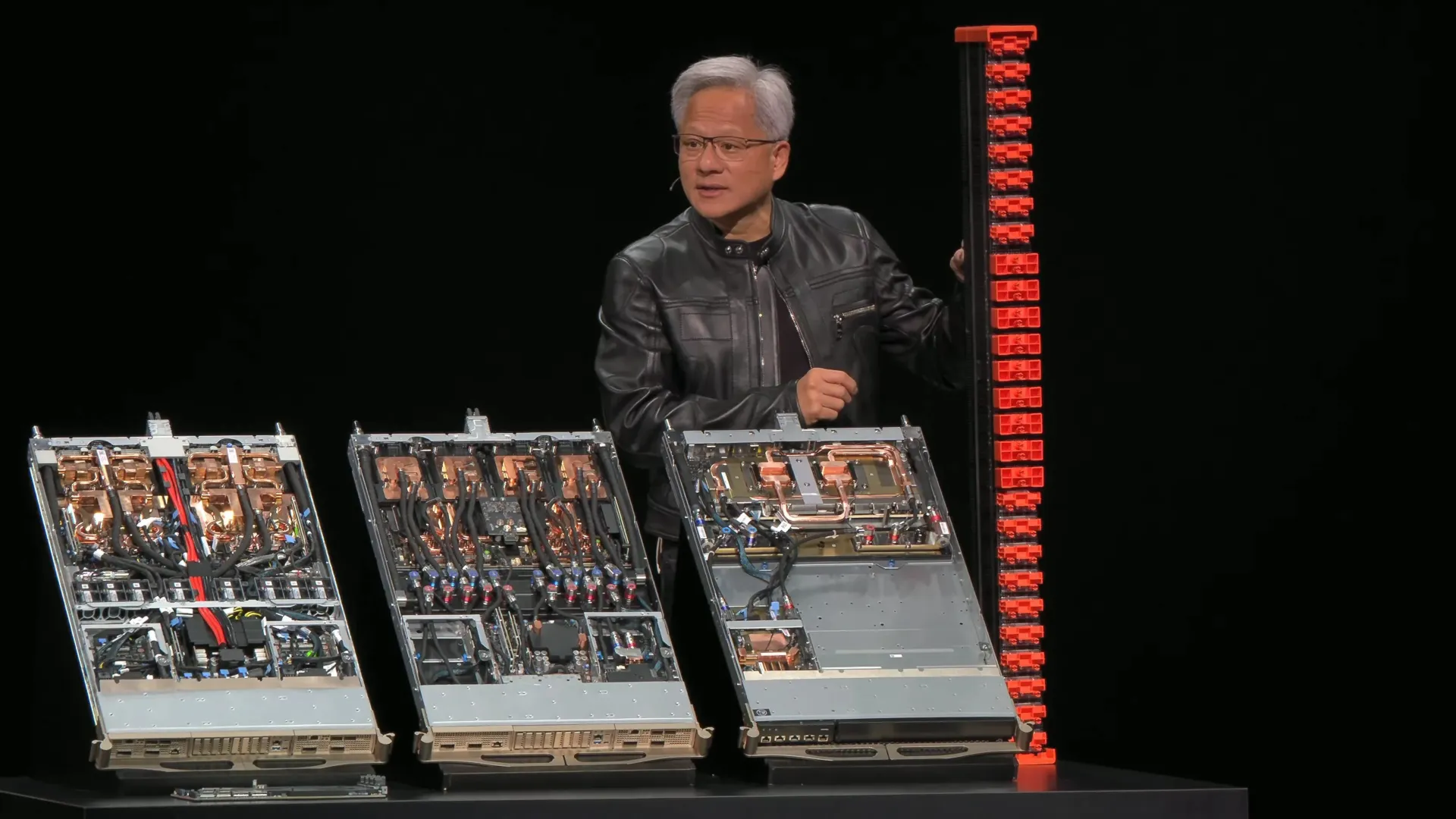
At Computex, Nvidia’s CEO, Jen-Hsun Huang, made a bold assertion regarding the company’s new NVLink Fusion technology, claiming that its spine can transfer data faster than the entirety of Internet traffic.
This latest version of NVLink, primarily utilized in substantial data centers with numerous CPUs and GPUs, was unveiled during Huang’s presentation. He demonstrated an NVLink spine that purportedly facilitates communication and data sharing between up to 72 powerful GPUs.
Huang stated that this single piece of tech can handle data transfers of up to 130 TB/s, reportedly exceeding the Internet’s average capacity of 900 Tb/s. This announcement sparked interest, although skepticism still looms regarding these staggering figures.
Why Such Claims Matter
Despite audacious claims by tech leaders at product launches, understanding the underlying capabilities of their technologies is essential. Although NVLink’s performance metrics are impressive, a closer look may reveal a more complicated picture; other data sources indicate that global Internet bandwidth exceeds 1,200 Tb/s.
Moreover, while an NVLink spine’s capabilities are remarkable, employing technologies like Nvidia’s RTX 5090 shows that even single GPUs can achieve considerable transfer rates, albeit far less than NVLink provides.
In summary, while the NVLink Fusion technology’s numbers are staggering, it’s crucial to apply a critical lens when interpreting such claims, especially from high-profile tech CEOs.
